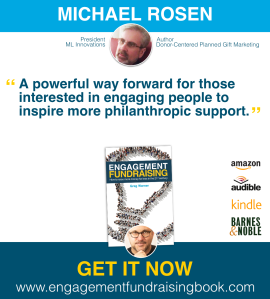Last week, I saw a tweet from the Dalai Lama that is relevant for fundraising professionals.
Your first reaction to this post might be, “Gee, I didn’t know the Dalai Lama has a Twitter account.”
Well, he does, and he has 18.8 million Followers. For some context, I’ll point out that the Twitter account of Pope Francis has 17.8 million Followers. In a comparison that may explain some of what is going on in the world, let me just mention that Kim Kardashian has 59 million Twitter Followers. Oh well.
So, the tweet from the Dalai Lama that resonated with me as a fundraising professional is this:
Even more important than the warmth and affection we receive, is the warmth and affection we give. It is by giving warmth and affection, by having a genuine sense of concern for others, in other words through compassion, that we gain the conditions for genuine happiness.
— Dalai Lama (@DalaiLama) November 26, 2018
“Even more important than the warmth and affection we receive, is the warmth and affection we give. It is by giving warmth and affection, by having a genuine sense of concern for others, in other words through compassion, that we gain the conditions for genuine happiness,” tweeted the Dalai Lama.

The 14th Dalai Lama of Tibet.
This is the essence of donor-centered fundraising. Yes, I know you like it when people donate to your organization. But, if you want that support to be something more than a one-time and/or limited transaction, you need to show donors you care about them, their needs and philanthropic aspirations. When practicing donor-centered fundraising, you will be able to develop the conditions for genuine happiness. I’m talking about the happiness of your donors, your happiness, your boss’s happiness, and the happiness of those who benefit from the services of your organization.
By treating people the way they want to be treated, you’ll acquire more donors, renew more donors, upgrade more, and receive more major and planned gifts from donors. In short, you’ll increase the lifetime value of your organization’s supporters.
Penelope Burk, in her book Donor-Centered Fundraising, describes what she means by the term:











